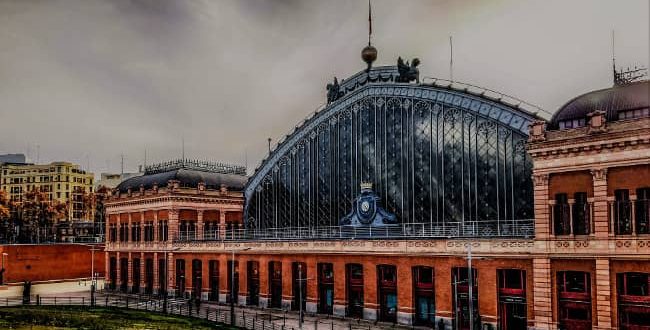
The Iron Architecture in Madrid
During the 19th century, some of the most important urban renovations in Madrid’s history were carried out. Also, the architecture of iron in Madrid and other new materials consolidated the transition from the traditional to the industrial city.
The destruction caused by the Peninsular War in Madrid (1808-1814) and the great Ecclesiastical confiscations that led to the demollition of churches and convents (and the use of those lands to build all kinds of buildings, squares, streets and gardens); the creation of the Special School of Architecture, the municipal ordinances and the Civil Code and, on the other hand, the demolition of the Fence of Felipe IV (1868) that surrounded the city together with the expansion plans of the city, led to a complete transformation of the capital in the 19th century, giving birth to the iron architecture in Madrid.
And another event that brought along a drastic change in the building ways: the Industrial Revolution. Despite the failure of this revolution in Spain and the industrial shortcomings of Madrid in comparison to the main European cities, this process of profound transformations inevitably brought new materials and new construction techniques to our city as well.
Among these new materials and procedures, iron architecture would be one of the great protagonists of the industrial style. Its advantages were numerous: it was strong, fireproof, quick to assemble and reduced support points, making it economical in terms of time, cost and space. However, this new iron architecture did not convince the most classical architects, who considered these structures a jumble of iron with no beauty at all. For this reason, the first iron constructions were done by engineers, not architects, and they were essentially practical works such as bridges, railway stations, markets… or other “ephemeral” structures, to be used for a certain time and then dismantled, such as pavilions for national and international
exhibitions.

Between the iron architecture examples in Madrid, we should highlight the first bridge built in this material in our country: the Parque del Capricho bridge in Alameda de Osuna, built in 1830, when this construction style had not yet spread in Spain.
The kiosks used to sale drinks, tobacco, newspapers, etc., or those that served as simple toilets, cages for animals or for music bands were originally made of wood, but they were also industrialized, and were part of the iron landscape of Madrid from the 19th century. Some examples that still exist are the Bandstand in Plaza de Chamberí or the Templete in Retiro Park.

And we must not forget the iron architecture mixed with the use of glass, a very useful material in this type of building to create translucent roofs and in the closing of facades. Together with glass, iron was the trendy material in Madrid on a large scale in buildings such as railway stations: the North Satation (Príncipe Pío), Delicias Station (The Railway Museum) or Atocha Station; markets such as the old Mercado de la Cebada or Mercado de San Miguel and exhibition pavilions such as the Velázquez Palace for the Mining Exhibition of 1883, or the Crystal Palace for the Philippine Exhibition of 1887. Although the latter more tan a palace, it would be a greenhouse… but we will talk about the history of the Crystal Palace in another post!

Remember that if you want to continue discovering many more stories, curiosities, places and trasures of Madrid’s architecture, you can join one of our Free Tours in Madrid from Monday to Sunday. We hope to see you in Puerta del Sol!